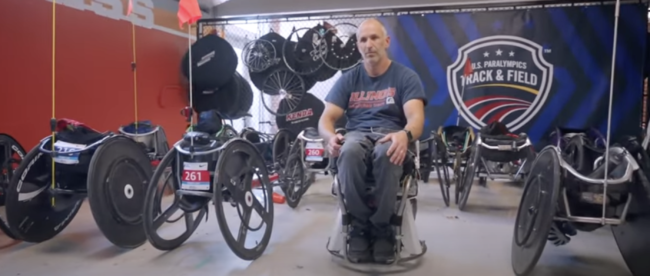Innovative Hands-Free Wheelchair PURE Revolutionizes Mobility for Disabled Users
Mobility devices have played a significant role in the lives of individuals with disabilities, particularly wheelchair users. However, traditional wheelchairs have remained largely unchanged since 1864, limiting users in various aspects of their lives. With the advent of self-balancing devices such as Segways and hoverboards, a new era of mobility is emerging. Inspired by these advancements, Adam Blakeney, a wheelchair user, initiated a collaborative project to explore innovative mobility solutions that liberate hands from the necessity of pushing wheels. This team, comprised of individuals with disabilities, engineers, and designers, set out to create a hands-free, lightweight, and compact mobility device.
The hands-free wheelchair prototype, known as PURE (Personalized Unique Rolling Experience), is a groundbreaking project developed by a multidisciplinary team at the University of Illinois. Funded by a $1.5 million grant from the National Science Foundation, PURE aims to offer a novel mode of mobility for individuals with physical disabilities. Unlike traditional wheelchairs, PURE operates similarly to a Segway, allowing users to lean in the desired direction to move. The chair features a unique ball-based wheel system that enables it to maneuver in all directions, including laterally, providing unprecedented ease and flexibility. It is worth noting that lateral movement – moving from left to right, is something traditional wheelchairs do not allow. The team identified the ball as an ideal spherical wheel, inspired by the Star Wars character BB-8 and the Nickelodeon show Avatar: The Last Airbender. The ballbot emerged as a prototype, driven by three motors and Omni wheels, allowing for omnidirectional motion.
One of the key benefits of PURE is its lightweight and compact design, which ensures that it does not compromise the independence of current manual wheelchair users. The team focused on creating a device that can be easily transferred into and out of vehicles and can navigate typical living spaces. The second-generation prototype supports up to 130 lbs, can move at speeds up to 2.3 m/s, and has advanced control features to accommodate users with varying levels of torso mobility. The prototype has been tested by both able-bodied individuals and manual wheelchair users, demonstrating its effectiveness and ease of use.
The ballbot not only addressed accessibility challenges but also sparked profound emotional connections. It allowed wheelchair users to experience moments that were previously inaccessible, such as walking hand in hand with loved ones. This emotional aspect of the device highlights the transformative power of technology in improving the lives of individuals with disabilities.
The ballbot project stands as a testament to the power of collaboration between end-users, designers, and engineers. By embracing the perspectives of those with lived experience, the team developed an innovative solution that celebrates function and emotional well-being. This groundbreaking device demonstrates the potential for future advancements in mobility, empowering individuals with disabilities to live life to their fullest potential.
Looking ahead, the team plans to enhance PURE with advanced driver assistance systems using machine learning for path-keeping, collision avoidance, and autonomous controlled stops. These improvements aim to further increase the safety and usability of the wheelchair. The development also includes a virtual reality simulation to train users and test controls, ensuring a smooth transition for new users. With a patent pending and successful prototype testing, the future of PURE looks promising as it continues to evolve and improve, providing greater mobility and independence to its users.
Read the paper Driving a Ballbot Wheelchair with Hands-Free Torso Control for more technical details.
Source: UIUC
ChatGPT, a potential tool for increased accessibility, was used as a research and writing aid for this blog post. Do you think this is an appropriate use of chatGPT? Why or why not? Let me know!


Leave a comment